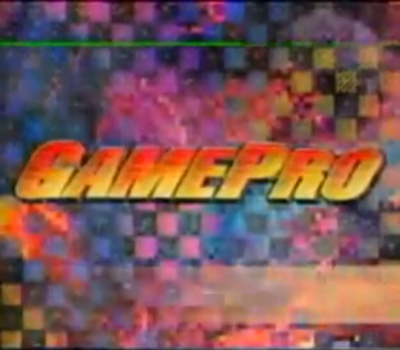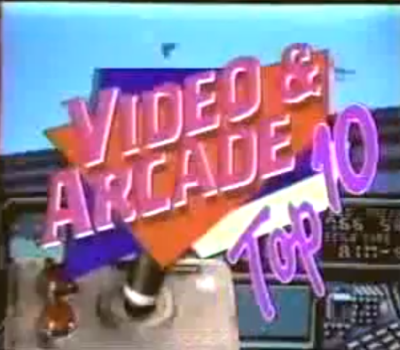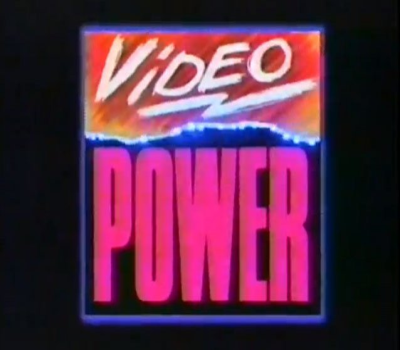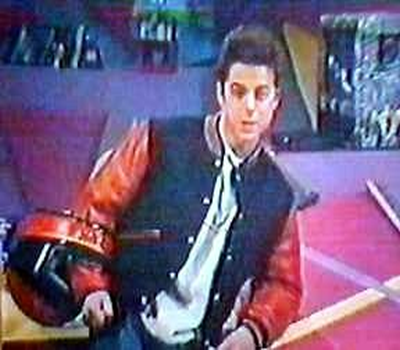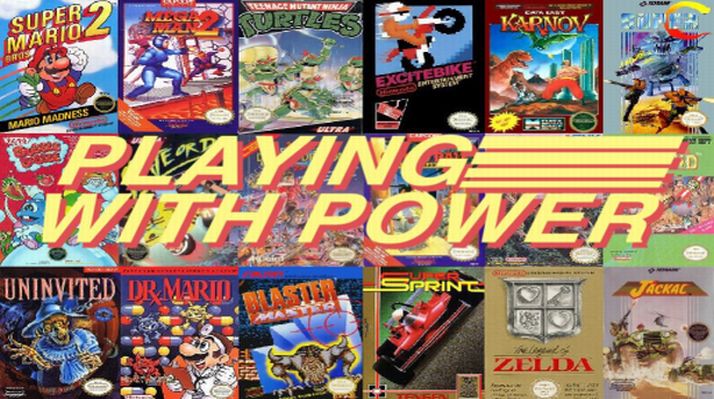 Welcome to another edition of Playing With Power. The review article that looks at all things Nintendo Entertainment System. Back in the day, many moons ago, if you wanted to know about certain video games, you didn’t really have many viable options. There was the rumors you’d hear from the kids on the schoolyard, or the possibility of maybe finding something in a magazine like Nintendo Power. There was also those VHS video game tips cassettes you could rent that were corny at times, but still quite useful. But as the Nintendo boom began to pick up in the early 90’s, and as video games once again invaded television, there would become several viable outlets for your gaming needs. So let’s take a look back at some of the classic tips, tricks, and gaming goofiness that invaded the airwaves in the early 90’s.
Welcome to another edition of Playing With Power. The review article that looks at all things Nintendo Entertainment System. Back in the day, many moons ago, if you wanted to know about certain video games, you didn’t really have many viable options. There was the rumors you’d hear from the kids on the schoolyard, or the possibility of maybe finding something in a magazine like Nintendo Power. There was also those VHS video game tips cassettes you could rent that were corny at times, but still quite useful. But as the Nintendo boom began to pick up in the early 90’s, and as video games once again invaded television, there would become several viable outlets for your gaming needs. So let’s take a look back at some of the classic tips, tricks, and gaming goofiness that invaded the airwaves in the early 90’s.
First on the docket for us to look back on is Gamepro TV, a tips, tricks, and review show hosted by J.D Roth and Brennan Howard. J.D Roth is perhaps the best known of the duo, as he has been a host of such shows like the American version of Fun House, as well as most recent works including the kids show Endurance, as well as doing work on several reality shows including the Biggest Loser. He also voiced Johnny Quest in the 90’s version of the cartoon. He stayed on during the entire duration of the 1 year run of Gamepro TV, as well as hosted the tips and tricks VHS tapes.
Brennan Howard is an actor and director, and for the first few episodes of the show was a co-host alongside J.D Roth. He was given a very over the top surfer dude accent, often citing certain games as radical, bogus, or gnarly dude. In other words, he was a great example of how some things in the 90’s don’t quite hold up.
So the general focus of Gamepro broke down into multiple segments. The most used one was S.W.A.T: Secret Weapons and Tactics. These would have J.D give tips to multiple games. Though most of the time it was Game Genie codes, especially for Battletoads, which they seemed to have a neverending supply of codes for. There was Ask the Pros, which had viewers send video questions to help with issues they had in a certain game. Be it, how to get further in Shadowgate or what you do with the giant piano in StarTropics.
ProView was the review section that looked at one particular game for the week. Often an NES game like Treasure Master, or Tiny Toon Adventures. Most often they’d rate the games on a scale of five similar to that of the Magazine, which includes graphics, challenge, sound, and fun factor. There was 16-bit hits, which looked at the newest things coming in 1991-1992. This included coverage of the Super Nintendo, and the ill-fated Sega CD. There was audio clips of people saying they beat a certain game, or got a high score. Plus there was what’s hot at the arcades, and finally game tips sent in by viewers. For a video game show, this really had a lot of content despite the often cheap feel of the show, and it’s corny nature. It was a solid representation of the Gamepro magazine, and honestly it does sadden me that it didn’t last as long as it did. In my eyes, it was top notch video game TV.
For me being a Canadian, we had Video and Arcade Top 10. Now this show was a huge part of my childhood. It lasted from around 1991 to the early 2000’s, which makes it the longest running of the shows I’ll be mentioning in this article. It was originally hosted by Gordon Michael Woolvet, the show would later be permanently hosted by Nicholas Picholas (Is that his real name?). The show was a mix of game show, reviews, tips, and even a look at the latest music and movies released at the time.
The main focus of the show was the game show element, which featured four kids playing one of the two games featured on that episode. They’d play the game for a certain amount of time, while Picholas and other hosts would give info on the game being played. The winner was determined by whoever would score the most points, or make it further in the game than the others. They’d then win a random prize chosen from whichever ball they pulled out of a can.
There was, as mentioned before, also plenty of focus on newly released movies, the hottest song of the week, and even letters. I even remember the “It’s letter time, it’s letter time” jingle. They would often put fan artwork on the walls, which was a really nice touch. I even remember that for the longest time they would count down the top five laserdisc releases of the week. I had never even seen a laserdisc until many years later, so I barely knew what they were. So, it was weird that they didn’t just say the top 5 movie rentals.
Despite the name having “Arcade” in it, there really wasn’t much about arcades. All games covered were Nintendo consoles beginning with the original NES all the way to the Gamecube. Which for a kid who had a Genesis in the mid-90’s was a bit sucky, since I never did get to play most of the games shown until many years later. But it was a great show from a great era of kids TV. Back when things weren’t so cynical, and just fun.
Next up on our Gaming Gallery is perhaps the best known of the bunch, and one of the strangest in many ways. Video Power was a syndicated video game show that ran from 1990 to 1992. It had two seasons, and believe me. They are the very definition of night and day. But we’ll get to that momentarily. Now this was not a show I saw as a kid, but thanks to the magic of Youtube, I can finally give some mention to this show.
Both seasons of the show was hosted by Johnny Arcade, who always came off as what would happen if you had someone ingest a whole crate of Pixy Stix and then down a gallon of Jolt Cola. I know he’s supposed to be the quintessential cool gamer dude, but he just comes off as a hyper spaz at times. But I guess if you down enough Red Bull and Mountain Dew, that would be the average modern gamer.
As mentioned, both seasons of the show were vastly different in many ways. The first season of the show worked in this format. It would start with Johnny giving tips to the latest NES, Game Boy, and Sega Genesis games, as well as previews to new titles. And then the show would take a backseat to talking about games to give us The Power Team. Acclaim’s attempt to cash in on the popularity of Captain N the Game Master. Except the big difference is that The Power Team consisted of Acclaim characters. Ah yes, such household names such as Kuros from Wizards and Warriors, Tyrone from Arch Rivals, Max Force from NARC, Kwirk from Kwirk, and Bigfoot the Monster Truck. Okay, Big Foot is the only well known name among this motley crew. Despite its best efforts, it’s really just a very forgettable space filler for the show. But maybe this should be something I talk about in another blog I run.
In the second season of Video Power, the entire format of the show changed from tips and tricks + cartoon, to a full on game show. Each week would feature a certain game, be it Battletoads, Batman, Rescue Rangers, or even Wrestlemania Challenge. Johnny would give certain tips and tricks both to the game of the day, and other hot titles. With the show now via a live studio audience, gaming questions would be asked when they would “Johnny on the Spot”. The chosen players would have to go through a trivia challenge.Following that would be actual gameplay of the chosen game of the episode, similar to Video and Arcade top 10, only with a shorter time limit.
And it’s honestly not that good. For one thing, it feels like the cameraman is suffering from severe A.D.D with how fast he and erratically moves the camera around. From shots to the screens, to the players, to that other guy who’s calling the action, to the crowd, then back to the gameplay. It’s very disorienting, and honestly not very fun to watch. Probably a main factor to the show not lasting past the third season. The winning gamer would have a bonus round to collect as many games as possible, and make it to the finish in time. Games like Battletoads, Batman, Miracle Piano System, you know the classics.
While the game show element is a bit clashing, I do like the 2nd season a bit more. It suffers from being way too erratic, but it has a lot of content, and doesn’t get bogged down with the Power Team cartoons. And while I have some qualms with Johnny Arcade, I can admit he made a great host, and actually came off like he knew a lot about video gaming. It’s not perfect, but it’s still fun.
And in the end, I think these are still fun shows. Sure they suffer from not being the most well held up, but they bring you back to when consoles like the NES ruled the world for kids everywhere. In an age where gaming info can be brought up in a mere matter of seconds, it’s crazy to think how these shows really were some of the few legit sources we had for gaming information. And while cornball as they were, they still deserve respect for being a great part of the childhood for those in the age of the great grey box.

